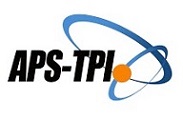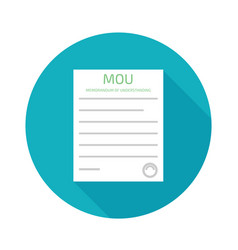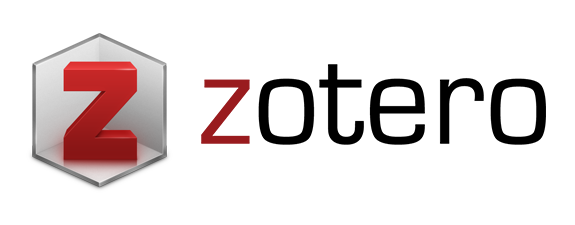Multimedia Drill And Practice Belajar Kosa Kata Bahasa Jepang Untuk Siswa Lintas Minat
Abstract
Abstract: The cross-interest program is a new program and policy by government in the curriculum 2013. The program aims to give students the opportunity to learn science outside the specialization program. However, there have obstacles to implementation it, as happened in the learning process of SMA Muhammadiyah 2 Genteng in class X of across Japanese interests. Students want teachers to use a variety of instructional media to improve their mastery of vocabulary that they feel difficult to learnt. So, in this research and development aims to produce multimedia learning products to facilitate and motivate students to always learning. This multimedia drill and practice designed to according what students need to improve their mastery of more new vocabulary in Japanese. In this research and development using the Lee & Owens method. Obtained data results from media experts namely 98.3% and 91.8% material experts. From these data shows that multimedia learning in the criteria (76% -100%) valid and feasible based on the percentage table of eligibility. Then the multimedia drill and practice is ready to use in the learning process.
Abstrak: Program lintas minat merupakan program dan kebijakan baru pemerintah pada kurikulum 2013. Program tersebut bertujuan untuk memberi kesempatan siswa untuk mempelajari suatu keilmuan di luar program peminatan. Namun, terdapat hambatan dalam pelaksanaanya seperti yang terjadi pada proses pembelajaran SMA Muhammadiyah 2 Genteng di kelas X lintas minat bahasa Jepang. Siswa menginginkan agar guru menggunakan variasi multimedia pembelajaran untuk meningkatkan penguasaan kosa kata yang mereka anggap sulit. Maka pada penelitian dan pengembangan ini bertujuan menghasilkan produk multimedia pembelajaran untuk mempermudah belajar agar siswa semangat belajar. Multimedia drill and practice ini dirancang sesuai kebutuhan siswa yakni untuk meningkatkan penguasaan kosa kata baru dalam bahasa jepang. Pada penelitian dan pengembangan ini menggunakan metode Lee & Owens. Didapatkannya data hasil dari ahli media yaitu 98,3% dan ahli materi 91,8%. Dari data tersebut menunjukkan multimedia pembelajaran dalam kriteria (76%-100%) valid dan layak berdasarkan presentase tabel kelayakan. Maka multimedia drill and practice tersebut siap digunakan dalam proses pembelajaran.
Keywords
Full Text:
PDFReferences
Alessi, S. M., & Trollip, S. R. (2001). Multimedia for Learning Methods and Development 3rd. Massachusetts: Pearson Educational Company.
Anas, M. A., Soepriyanto, Y., & Susilaningsih, S. (2019). Development of multimedia network topology tutorials for class x high school computer and network engineering. Journal of Educational Technology Studies, 1 (4), 307-314.
Billah, A. F. (2015). Utilization of Information and Communication Technology Media in the Implementation of the 2013 Curriculum. Bandung: repository.upi.edu.
Chee, Tan Seng & Wong, Angela F. L. (2003). Teaching and Learning with Technology. Singapore: Prentice Hall.
Danasasmita, W. (2009). Japanese Language Learning Methodology. Bandung: Rizqi Press.
Darmawan, D. (2012). Learning technologies. Bandung: PT. Rosdakarya youth.
Directorate of Senior High School Development. (2017). Interests and Interests Model. Jakarta: Ministry of Education and Culture.
Gunawan, F. N., Soepriyanto, Y., & Wedi, A. (2020). Development of Multimedia Drill And Practice to Improve Japanese Language Proficiency in Everyday Expressions. Journal of Educational Technology Studies, 3 (2), 187-198.
Haristiani, N., Rahmawati, R. S., Sofiani, D., & Nandiyanto, A. B. D. (2016). Interactive Media in Learning Japanese Language Vocabulary for Vocational School. January. https://doi.org/10.2991/icieve-15.2016.56
Heinich, R. M. (2002). Instructional Media and The New Technologies of Instruments. New York: Millan Publishing Company.
Irianto, A. (2011). Education as an Investment in the Development of a Nation. Jakarta: Golden.
Lee. W.W. & Owens. D L. (2004). Multimedia-Based Instructional Design, (2nd Ed.). San Francisco: Pfeiffer.
McDonoughm, S. K. (2005). Way Beyond Drill and Practice: Foreign Language Lab Activities in Support of Constructivist Learning. Int'l J of Instructional Media, Vol. 28 (1).
Meliawati, W. (2016). Cross-interest Implementation Survey in Biology Subjects along with Implementation Constraints Analysis in State Senior High Schools in Malang City. Thesis, Department of Biology-Faculty of Mathematics and Natural Sciences, UM.
Mualimah, A., Praherdhiono, H., & Adi, E. P. (2019). Developing Nahwu Interactive Quiz as a Drill and Practice Learning Media for Nahwu Learning at the Salafiyah Putri Al-Ishlahiyah Islamic Boarding School Malang. Journal of Educational Technology Studies, 2 (3), 203-212.
Mulyasa. (2013). Development and Implementation of 2013 Curriculum. Bandung: PT Remaja Rosdakarya.
Munir. (2014). Multimedia Concepts & Applications in Education. Bandung: Alfabeta.
Munqidzah, Z. (2014). Japanese Language Learning Model at Diponegoro Tumpang High School. Journal of Scientific Language and Literature, 20-32.
Nurullah, A., Soepriyanto, Y., Sulton, S., & Husna, A. (2019). Development of Multimedia Learning Energy in Living Systems. Journal of Educational Technology Studies, 2 (4), 319.
Okuyama, Y. (2013). CALL Vocabulary Learning in Japanese: Does Romaji Help Beginners Learn More Words ?. CALICO Journal, 24 (2), 355–379. https://doi.org/10.1558/cj.v24i2.355-379
Permendikbud. (2014). Regulation of the Minister of Education and Culture of the Republic of Indonesia No 64 of 2014. Retrieved from http://simpuh.kemenag.go.id/: http://simpuh.kemenag.go.id/regulasi/permendikbud_64_14.pdf
Connect, D., Sihkabuden, S., & Ulfa, S. (2018). Gamification-Based Mobile Learning Development for Mastery of Japanese Vocabulary for Class X SMAN 1 Garum. JINOTEP (Journal of Innovation and Learning Technology) Study and Research in Learning Technology, 3 (2), 121-129.
Shimizu, R., & Ogawa, K. (2014). Which Is More Effective For Learning German and Japanese Language, Paper or Digital? ”. In International Conference on Learning and Collaboration Technologies (pp. 309-318). Springer, Cham.
Soenarto, Sunaryo. (2015). Apply Aproach. UNY Press: Yogyakarta.
Udjaja, Y. (2018). Gamification Assisted Language Learning for Japanese Language Using Expert Point Cloud Recognizer. International Journal of Computer Games Technology, 2018. https://doi.org/10.1155/2018/9085179
DAFTAR RUJUKAN
Alessi, S. M., & Trollip, S. R. (2001). Multimedia for Learning Methods and Development 3rd. Massachusetts: Pearson Educational Company.
Anas, M. A., Soepriyanto, Y., & Susilaningsih, S. (2019). Pengembangan multimedia tutorial topologi jaringan untuk smk kelas x teknik komputer dan jaringan. Jurnal Kajian Teknologi Pendidikan, 1(4), 307-314.
Billah, A. F. (2015). Pemanfaatan Media Teknologi Informasi dan Komunikasi dalam Implementasi Kurikulum 2013 . Bandung: repository.upi.edu.
Chee, Tan Seng & Wong, Angela F. L. (2003). Teaching and Learning with Technology. Singapore: Prentice Hall.
Danasasmita, W. (2009). Metodologi Pembelajaran Bahasa Jepang. Bandung: Rizqi Press.
Darmawan, D. (2012). Teknologi Pembelajaran. Bandung: PT. Remaja Rosdakarya.
Direktorat Pembinaan Sekolah Menengah Atas. (2017). Model Peminatan dan Lintas Minat. Jakarta: Kementrian Pendidikan dan Kebudayaan.
Gunawan, F. N., Soepriyanto, Y., & Wedi, A. (2020). Pengembangan Multimedia Drill And Practice Meningkatkan Kecakapan Bahasa Jepang Ungkapan Sehari-Hari. Jurnal Kajian Teknologi Pendidikan, 3(2), 187-198.
Haristiani, N., Rahmawati, R. S., Sofiani, D., & Nandiyanto, A. B. D. (2016). Interactive Media in Learning Japanese Language Vocabulary for Vocational School. January. https://doi.org/10.2991/icieve-15.2016.56
Heinich, R. M. (2002). Instructional Media and The New Technologies of Instrumen. New York: Mcmillan Publishing Company.
Irianto, A. (2011). Pendidikan Sebagai Investasi dalam Pembangunan Suatu Bangsa. Jakarta: Kencana.
Lee. W.W. & Owens. D L. (2004). Multimedia -Based Instructional Design, (2nd Ed.). San Francisco: Pfeiffer.
McDonoughm, S. K. (2005). Way Beyond Drill and Practice: Foreign Language Lab Activities in Support of Constructivist Learning. Int’l J of Instructional Media, Vol. 28(1).
Meliawati, W. (2016). Survei Pelaksanaan Lintas Minat Pada Mata Pelajaran Biologi Beserta Analisis Kendala Pelaksanaan di SMA Negeri Se Kota Malang. SKRIPSI Jurusan Biologi-Fakultas MIPA UM.
Mualimah, A., Praherdhiono, H., & Adi, E. P. (2019). Pengembangan Kuis Interaktif Nahwu Sebagai Media Pembelajaran Drill and Practice Pada Pembelajaran Nahwu Di Pondok Pesantren Salafiyah Putri Al-Ishlahiyah Malang. Jurnal Kajian Teknologi Pendidikan, 2(3), 203-212.
Mulyasa. (2013). Pengembangan dan Implementasi Kurikulum 2013. Bandung: PT Remaja Rosdakarya.
Munir. (2014). Multimedia Konsep & Aplikasi dalam Pendidikan. Bandung: Alfabeta.
Munqidzah, Z. (2014). Model Pembelajaran Bahasa Jepang di SMA Diponegoro Tumpang . Jurnal Ilmiah Bahasa dan Sastra , 20-32.
Nurullah, A., Soepriyanto, Y., Sulton, S., & Husna, A. (2019). Pengembangan Multimedia Pembelajaran Energi dalam Sistem Kehidupan. Jurnal Kajian Teknologi Pendidikan, 2(4), 319.
Okuyama, Y. (2013). CALL Vocabulary Learning in Japanese: Does Romaji Help Beginners Learn More Words?. CALICO Journal, 24(2), 355–379. https://doi.org/10.1558/cj.v24i2.355-379
Permendikbud. (2014). Peraturan Menteri Pendidikan dan Kebudayaan Republik Indonesia No 64 Tahun 2014. Retrieved from http://simpuh.kemenag.go.id/: http://simpuh.kemenag.go.id/regulasi/permendikbud_64_14.pdf
Sambung, D., Sihkabuden, S., & Ulfa, S. (2018). Pengembangan Mobile Learning Berbasis Gamifikasi untuk Penguasaan Kosakata Bahasa Jepang Kelas X SMAN 1 Garum. JINOTEP (Jurnal Inovasi dan Teknologi Pembelajaran) Kajian dan Riset dalam Teknologi Pembelajaran, 3(2), 121-129.
Shimizu, R., & Ogawa, K. (2014).Which Is More Effective For Learning German and Japanese Language, Paper or Digital?”. In International Conference on Learning and Collaboration Technologies (pp. 309-318). Springer, Cham.
Soenarto, Sunaryo. (2015). Apply Aproach. UNY Press: Yogyakarta.
Udjaja, Y. (2018). Gamification Assisted Language Learning for Japanese Language Using Expert Point Cloud Recognizer. International Journal of Computer Games Technology, 2018. https://doi.org/10.1155/2018/9085179
DOI: http://dx.doi.org/10.17977/um038v3i42020p415
Refbacks
- There are currently no refbacks.
Copyright (c) 2020 Kartika Suci Lestari

This work is licensed under a Creative Commons Attribution-ShareAlike 4.0 International License.
JKTP: Jurnal Kajian Teknologi Pendidikan published by Department of Educational Technology, Faculty of Education, State University of Malang in Collaboration with Asosiasi Program Studi Teknologi Pendidikan Indonesia (APS TPI).
Publisher Address:
Lab. Teknologi Pendidikan, Gd.E2, Lt.1
Fakultas Ilmu Pendidikan Universitas Negeri Malang
Jl. Semarang 5, Kota Malang Email: jktp.fip@um.ac.id
========================================================================================================
| INDEXED BY | TOOLS | PLAGIARISM CHECK | ARTICLE TEMPLATE |
|
|

JKTP: Jurnal Kajian Teknologi Pendidikan is licensed under a Creative Commons Attribution-ShareAlike 4.0 International License.
JKTP Statistics (Since July 13th, 2020)





.png)












